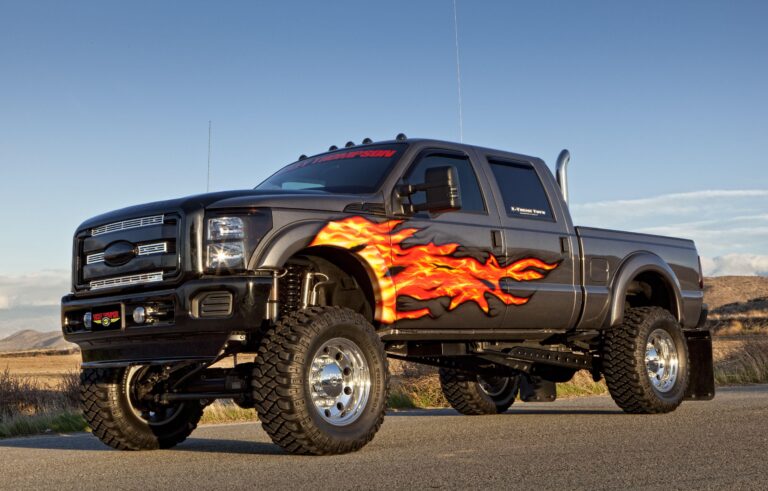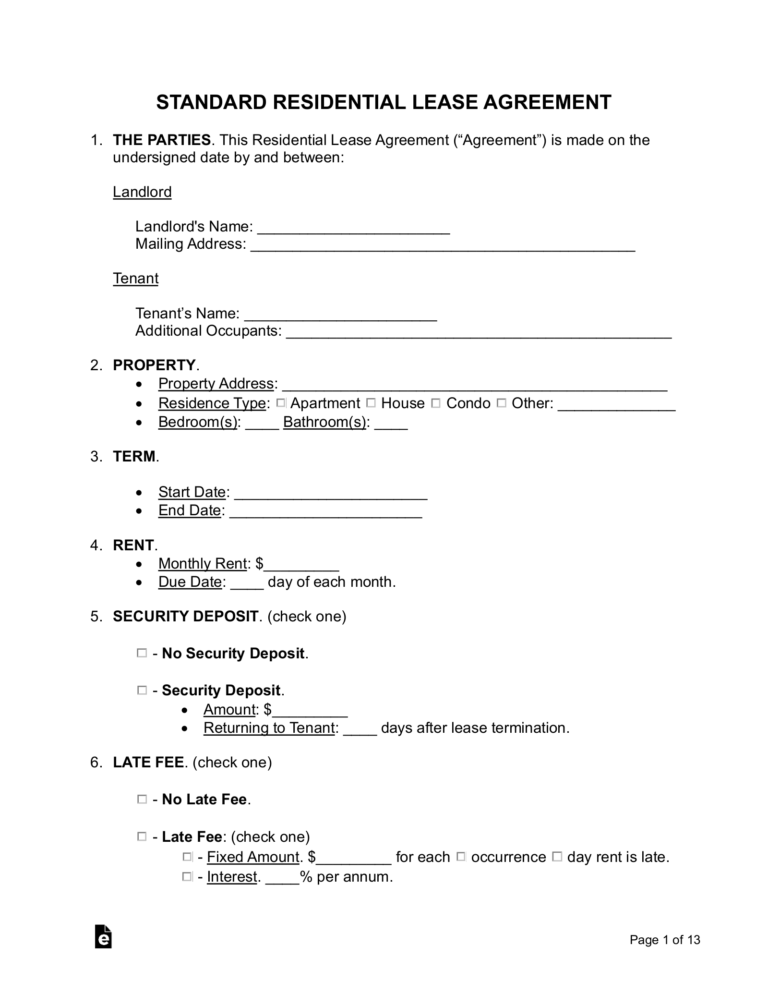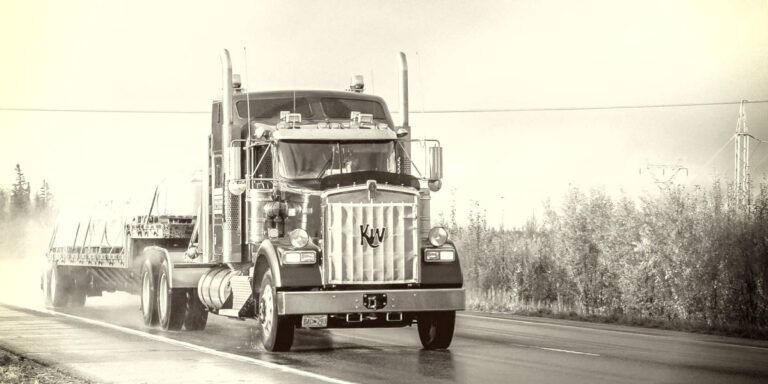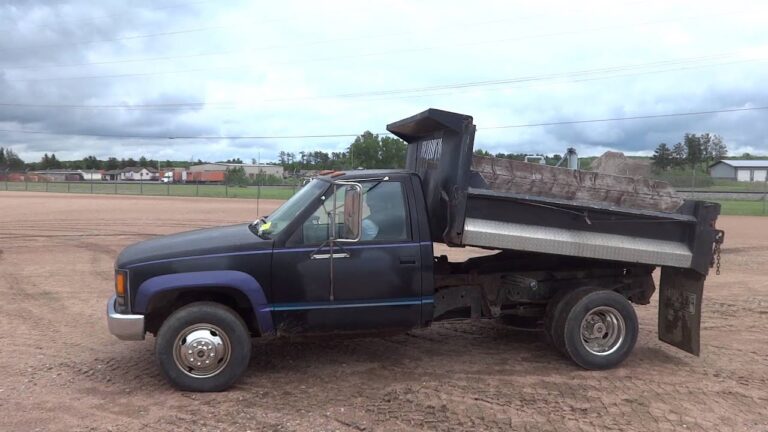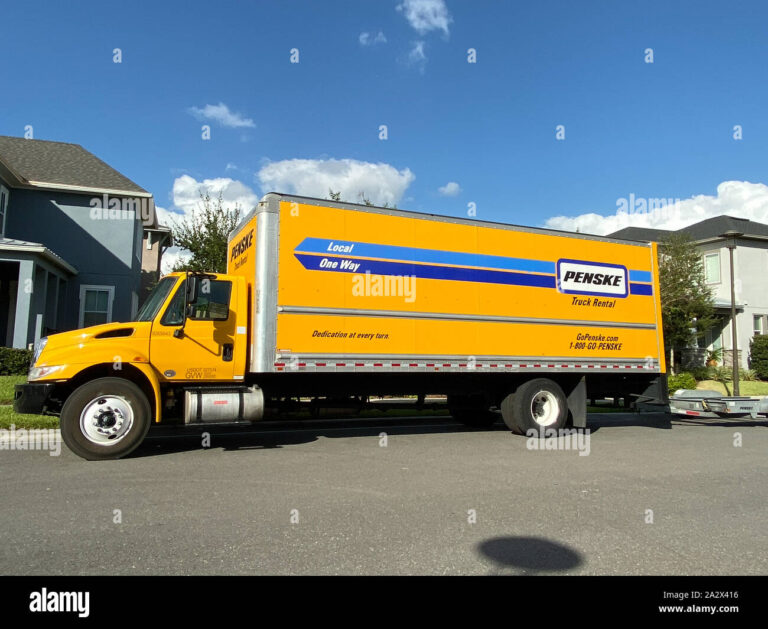Pick Up Truck Parts Name: A Comprehensive Guide to Understanding Your Vehicle
Pick Up Truck Parts Name: A Comprehensive Guide to Understanding Your Vehicle cars.truckstrend.com
The pickup truck, a quintessential workhorse and a beloved symbol of utility and adventure, is a marvel of engineering. From hauling heavy loads to conquering rugged terrain, its versatility is unmatched. But beneath its robust exterior lies a complex interplay of hundreds of individual components, each with a specific name and function. For any truck owner, enthusiast, or aspiring mechanic, understanding the "Pick Up Truck Parts Name" is not just an academic exercise; it’s a crucial step towards effective maintenance, informed upgrades, and ensuring the longevity and optimal performance of your vehicle.
This comprehensive guide will demystify the intricate world of pickup truck components, breaking down the vehicle into its core systems. We’ll explore the names of key parts, their roles, and offer practical advice to help you navigate the often-overwhelming landscape of automotive terminology.
Pick Up Truck Parts Name: A Comprehensive Guide to Understanding Your Vehicle
The Heart of the Beast: Engine & Powertrain Components
At the core of every pickup truck’s power and motion lies the engine and its associated powertrain components. These parts work in unison to generate and transmit power to the wheels.
- Engine Block: The main structure of the engine, typically cast iron or aluminum, housing the cylinders, crankshaft, and camshaft.
- Cylinder Head: Sits atop the engine block, containing the valves, camshaft (in overhead cam designs), and combustion chambers.
- Pistons: Reciprocating components within the cylinders that convert the force of expanding gases into linear motion.
- Crankshaft: Converts the linear motion of the pistons into rotational motion, sending power to the transmission.
- Camshaft: Controls the opening and closing of the engine’s intake and exhaust valves, ensuring proper air-fuel mixture and exhaust gas expulsion.
- Turbocharger/Supercharger: Forced induction devices that compress air entering the engine, significantly increasing power output (common in modern trucks).
- Transmission: A complex gear system (manual or automatic) that manages the engine’s power delivery to the wheels, allowing for different speeds and torque.
- Torque Converter: (Automatic transmissions) A fluid coupling that transfers power from the engine to the transmission.
- Clutch: (Manual transmissions) Disengages the engine from the transmission to allow for gear changes.
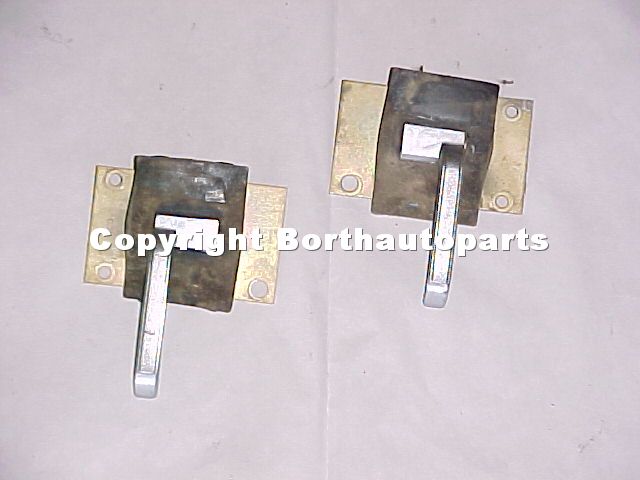
- Driveshaft: A rotating shaft that transmits power from the transmission or transfer case to the differential.
- Differential: A gear assembly that allows the drive wheels to rotate at different speeds, crucial for turning.
- Axles: Shafts that connect the differential to the wheels, transferring power and supporting the vehicle’s weight.
- Transfer Case: (4×4 trucks) A component that splits power between the front and rear axles, enabling four-wheel drive.
- Exhaust System: Manages and expels exhaust gases.
- Exhaust Manifold: Collects exhaust gases from the engine cylinders.
- Catalytic Converter: Converts harmful pollutants in exhaust gases into less toxic substances.
- Muffler: Reduces exhaust noise.
- Cooling System: Regulates engine temperature.
- Radiator: Dissipates heat from the engine coolant.
- Water Pump: Circulates coolant throughout the engine.
- Thermostat: Regulates coolant flow to maintain optimal engine temperature.
- Fuel System: Stores and delivers fuel to the engine.
- Fuel Tank: Stores gasoline or diesel fuel.
- Fuel Pump: Delivers fuel from the tank to the engine.
- Fuel Injectors: Atomize and spray fuel into the engine’s combustion chambers.
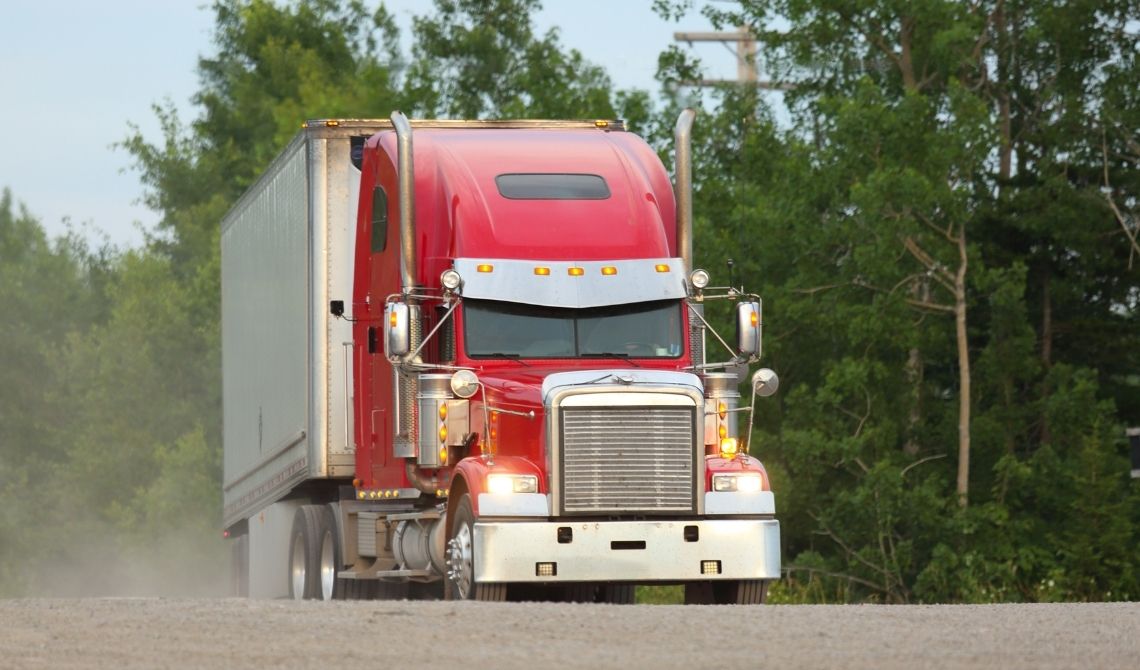
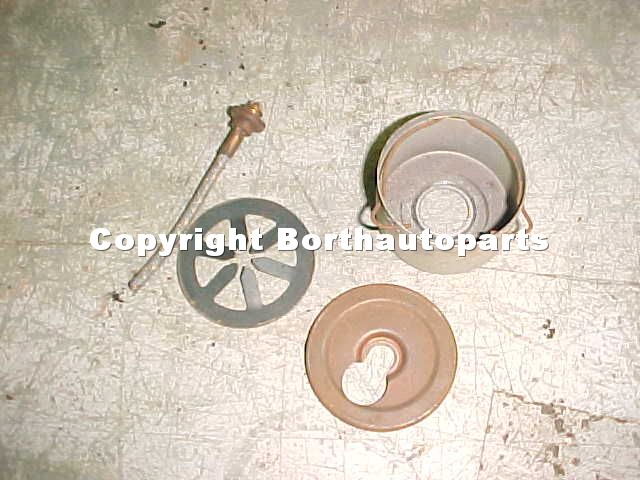
Foundation & Control: Chassis, Suspension & Steering
These components form the structural backbone of the truck and are responsible for its ride quality, handling, and stability.
- Frame (Chassis): The robust underlying structure (often ladder-frame) that supports the entire vehicle, including the engine, body, and suspension.
- Body Mounts: Rubber or polyurethane bushings that separate the truck”s cab and bed from the frame, reducing vibration and noise.
- Suspension System: Cushions the ride and maintains tire contact with the road.
- Springs (Coil/Leaf): Absorb vertical impacts and support the vehicle’s weight. Leaf springs are common on rear axles of pickups for heavy loads.
- Shock Absorbers/Struts: Dampen spring oscillations and control suspension movement.
- Control Arms: Connect the wheel hub to the vehicle’s frame, allowing for vertical wheel movement.
- Ball Joints: Pivoting connections that allow the suspension and steering components to move freely.
- Bushings: Rubber or polyurethane sleeves that dampen vibrations and provide flexible connections between components.
- Steering System: Allows the driver to control the direction of the wheels.
- Steering Rack (Rack and Pinion) / Steering Box (Recirculating Ball): Converts rotational steering wheel input into lateral motion for the wheels.
- Tie Rods: Connect the steering rack/box to the steering knuckles, allowing the wheels to turn.
- Power Steering Pump: (Hydraulic systems) Assists the driver in turning the steering wheel.
- Wheels & Tires: The primary contact points with the road, crucial for traction, braking, and handling.
Safety & Stopping Power: Brake System
The braking system is paramount for safety, allowing the truck to slow down and stop effectively.
- Brake Discs/Rotors: Rotating metal discs attached to the wheels that are clamped by the calipers during braking.
- Brake Calipers: Housings containing pistons that push the brake pads against the rotors.
- Brake Pads: Friction material that presses against the rotors to create stopping power.
- Brake Lines: Hoses and tubes that carry hydraulic fluid from the master cylinder to the calipers/wheel cylinders.
- Master Cylinder: Converts pedal pressure into hydraulic pressure, forcing fluid through the brake lines.
- Brake Booster: Uses engine vacuum or hydraulic pressure to amplify the force applied to the brake pedal.
- ABS Module (Anti-lock Braking System): Electronically controls brake pressure to prevent wheel lock-up during hard braking.
The Outer Shell: Body & Exterior Components
These are the visible parts of the truck that define its appearance, provide passenger protection, and house the cargo.
- Cab: The enclosed passenger compartment.
- Regular Cab: Single row of seats.
- Extended Cab (King Cab/Quad Cab): Small rear jump seats or storage space behind the front seats.
- Crew Cab (Double Cab): Full-size rear seats, similar to a sedan.
- Bed: The open cargo area at the rear of the truck.
- Short Bed, Standard Bed, Long Bed: Refer to the length of the cargo bed.
- Fenders: Panels that cover the wheels, protecting them from debris.
- Hood: The hinged cover over the engine compartment.
- Grille: The front opening of the vehicle, allowing airflow to the radiator.
- Bumper (Front/Rear): Impact-absorbing structures at the front and rear of the vehicle.
- Doors: Provide access to the cab.
- Tailgate: The hinged rear gate of the truck bed, allowing for easier loading and unloading.
- Headlights, Taillights, Fog Lights: Essential lighting for visibility and safety.
- Mirrors (Side/Rearview): Provide visibility of surroundings.
The Command Center: Interior & Cabin Components
The interior is where the driver and passengers interact with the truck, offering comfort, control, and entertainment.
- Dashboard (Dash): The panel in front of the driver, housing the instrument cluster, infotainment system, and various controls.
- Steering Wheel: The primary control for directing the vehicle.
- Instrument Cluster: Displays vital vehicle information like speed, RPM, fuel level, and warning lights.
- Seats: Provide comfort and support for occupants.
- Seatbelts: Crucial safety restraints.
- Infotainment System: Audio, navigation, and connectivity features.
- HVAC Controls: Heating, Ventilation, and Air Conditioning controls.
- Door Panels: Interior trim on the doors, often housing power window switches and speakers.
- Interior Trim: Decorative and functional panels throughout the cabin.
The Nerve Center: Electrical & Lighting System
This system powers all the electronic components, from ignition to advanced safety features.
- Battery: Stores electrical energy to start the engine and power accessories when the engine is off.
- Alternator: Generates electricity to recharge the battery and power the vehicle’s electrical systems when the engine is running.
- Starter Motor: An electric motor that cranks the engine to start it.
- Wiring Harness: Bundles of wires that transmit electrical signals and power throughout the vehicle.
- Fuses & Relays: Protective devices that prevent electrical overloads and control various circuits.
- Sensors: Countless sensors (e.g., Oxygen Sensor, MAP Sensor, Crankshaft Position Sensor, Camshaft Position Sensor, Wheel Speed Sensor) monitor various parameters and send data to the vehicle’s computer (ECU).
- ECU (Engine Control Unit) / PCM (Powertrain Control Module): The "brain" of the truck, managing engine performance, transmission shifts, emissions, and more based on sensor inputs.
Enhancements & Utility: Common Accessories & Upgrades
Beyond the core components, many parts are added to enhance a truck’s utility, aesthetics, or off-road capability.
- Bed Liner: Protects the truck bed from scratches and dents.
- Tonneau Cover: A cover for the truck bed, protecting cargo from weather and theft.
- Toolboxes: Storage compartments often mounted in the truck bed.
- Running Boards/Nerf Bars: Steps to assist in entering and exiting the truck.
- Lift Kits/Leveling Kits: Modify the truck’s suspension to increase ground clearance or level the stance.
- Winches: Mechanical devices used for pulling heavy loads or self-recovery in off-road situations.
- Hitches (Trailer Hitch): Connect the truck to a trailer for towing.
- Aftermarket Wheels/Tires: Custom wheels and tires for improved aesthetics, performance, or off-road capability.
Practical Advice for Truck Owners
Understanding these parts names empowers you as a truck owner. Here’s why and what to do with this knowledge:
- Informed Maintenance & Repairs: When a mechanic tells you your "ball joints are worn," you’ll know exactly what they’re talking about and why it’s important. This prevents being oversold on unnecessary repairs.
- DIY Confidence: For those who enjoy working on their trucks, knowing part names is the first step to confidently ordering the correct replacements or following repair guides.
- Part Sourcing: Whether you need OEM (Original Equipment Manufacturer) parts from the dealership or aftermarket parts from a third party, knowing the precise name and function helps you find compatible and high-quality components.
- Troubleshooting: Many common truck issues can be narrowed down if you understand which systems and parts might be involved (e.g., a "clunk" from the suspension might point to control arm bushings).
- Upgrades & Customization: If you’re planning a lift kit or new exhaust, knowing the related components helps you choose the right products and understand the installation process.
Always consult your truck’s owner’s manual for specific part numbers and recommended maintenance schedules. When in doubt about a repair, especially concerning critical safety systems like brakes or steering, it’s always best to consult a certified professional mechanic.
Sample Price Table: Common Pickup Truck Parts (Estimated Ranges)
Please note: These prices are highly variable and serve only as a rough estimate. Actual costs depend on the truck’s make, model, year, part brand (OEM vs. aftermarket), labor costs, and regional market fluctuations. This table represents the part cost only, not including labor for installation.
| Part Name | Description | Estimated Price Range (USD) |
|---|---|---|
| Engine Components | ||
| Spark Plugs (set of 6-8) | Ignites air-fuel mixture | $30 – $100 |
| Air Filter | Filters air entering engine | $15 – $50 |
| Oil Filter | Filters engine oil | $5 – $25 |
| Fuel Pump | Delivers fuel from tank to engine | $150 – $500 |
| Water Pump | Circulates engine coolant | $80 – $350 |
| Alternator | Charges battery, powers electrical system | $150 – $600 |
| Starter Motor | Cranks engine to start | $120 – $450 |
| Chassis & Suspension | ||
| Shock Absorber (each) | Dampens suspension movement | $40 – $200 |
| Leaf Spring (each) | Supports rear weight, absorbs impacts | $100 – $400 |
| Ball Joint (each) | Pivoting connection in suspension | $30 – $150 |
| Control Arm (each) | Connects wheel to frame | $80 – $300 |
| Tie Rod End (each) | Connects steering to wheel knuckle | $25 – $100 |
| Brake System | ||
| Brake Pads (set, front/rear) | Friction material for stopping | $30 – $150 |
| Brake Rotors (each) | Discs clamped by pads | $40 – $180 |
| Brake Caliper (each) | Houses pistons, applies pads to rotor | $70 – $300 |
| Master Cylinder | Converts pedal pressure to hydraulic pressure | $80 – $250 |
| Body & Exterior | ||
| Headlight Assembly (each) | Complete headlight unit | $100 – $500 |
| Tailgate (aftermarket) | Rear gate of truck bed | $250 – $800 |
| Fender (aftermarket) | Body panel over wheel | $80 – $300 |
| Side Mirror (each) | Exterior rearview mirror | $50 – $400 |
| Interior & Accessories | ||
| Cabin Air Filter | Filters air entering cabin | $15 – $40 |
| Wiper Blades (pair) | Cleans windshield | $20 – $60 |
| Tonneau Cover (basic roll-up) | Bed cover | $200 – $600 |
| Bed Liner (drop-in) | Protects truck bed | $150 – $400 |
Frequently Asked Questions (FAQ) about Pickup Truck Parts
Q1: Why is it important to know the names of pickup truck parts?
A1: Knowing part names empowers you to understand your truck better, communicate effectively with mechanics, make informed decisions about repairs and upgrades, and potentially save money by identifying parts yourself for DIY projects. It’s crucial for general maintenance, troubleshooting, and ensuring your truck’s longevity.
Q2: What’s the difference between OEM and aftermarket parts? Which should I choose?
A2: OEM (Original Equipment Manufacturer) parts are identical to the parts your truck came with from the factory. They are typically higher quality, guaranteed to fit perfectly, and often come with a warranty. However, they are usually more expensive. Aftermarket parts are made by companies other than the original manufacturer. They can be significantly cheaper and sometimes offer performance improvements or unique features. The choice depends on your budget, the specific part (critical safety components often warrant OEM), and whether you prioritize exact fit and quality assurance (OEM) or cost savings and potential customization (aftermarket).
Q3: How often should I replace common parts like oil filters, air filters, and spark plugs?
A3: This varies significantly by truck model, driving conditions, and manufacturer recommendations. Always consult your truck’s owner’s manual for precise maintenance schedules. Generally:
- Oil Filter: Every oil change (typically 5,000-10,000 miles).
- Air Filter: Every 15,000-30,000 miles, or more often in dusty conditions.
- Spark Plugs: Varies widely, from 30,000 miles for conventional plugs to 100,000+ miles for iridium/platinum plugs.
Q4: Can I install truck parts myself, or should I always go to a professional?
A4: Many basic maintenance tasks and accessory installations (e.g., air filter replacement, wiper blades, bed liners, tonneau covers) can be done by a DIY enthusiast with basic tools and some guidance. However, for critical systems like brakes, steering, suspension, or complex engine/transmission work, professional installation is highly recommended due to safety implications, specialized tools required, and the need for proper torque specifications and diagnostics.
Q5: Where can I find specific part numbers for my truck?
A5: You can often find part numbers in your truck’s owner’s manual, on the existing part itself, or by using online parts diagrams provided by dealerships or aftermarket parts suppliers. Having your Vehicle Identification Number (VIN) is essential when looking up specific parts, as it ensures compatibility with your exact truck model and trim level.
Conclusion
A pickup truck is more than just a vehicle; it’s an investment, a tool, and for many, a way of life. By taking the time to learn the "Pick Up Truck Parts Name" and understanding the function of each component, you empower yourself to be a more knowledgeable and responsible owner. This knowledge is your first line of defense against costly repairs, your guide to effective maintenance, and your key to unlocking the full potential and longevity of your trusted pickup. Drive smart, drive informed, and enjoy the open road with confidence in your understanding of the machine beneath you.
